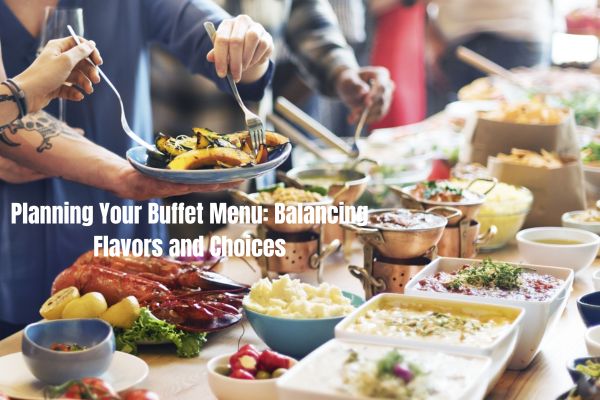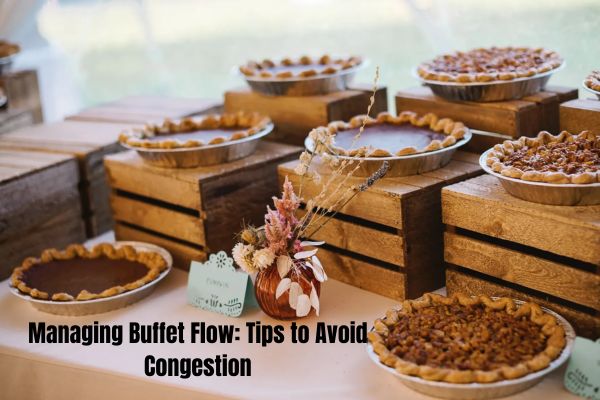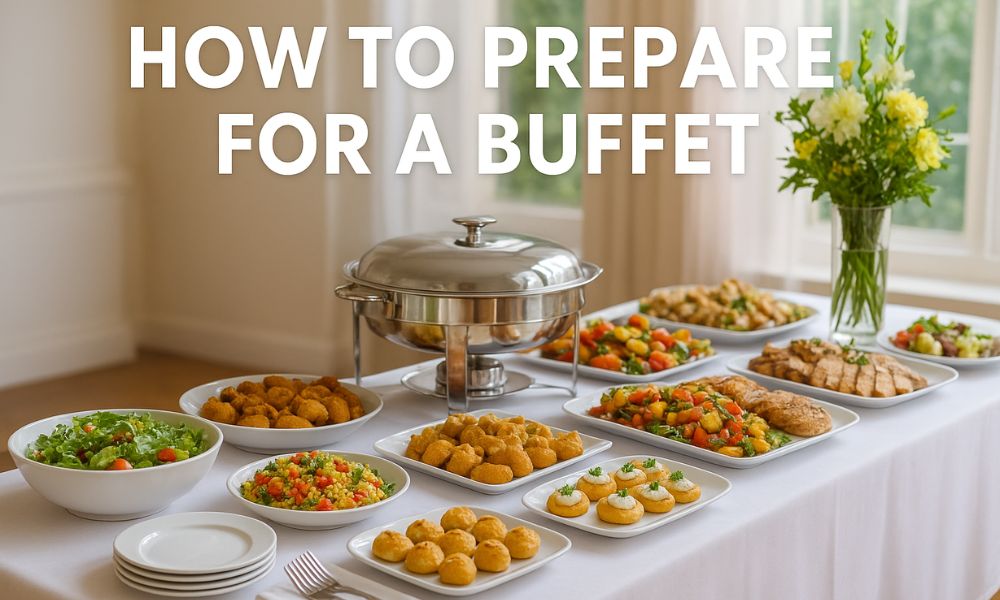Buffets are a wonderful way to serve a variety of foods while giving your guests the freedom to choose what they love. However, hosting a successful buffet takes careful planning and organization. By preparing in advance, you can ensure your buffet flows smoothly, looks inviting, and leaves a lasting impression on your guests. Whether it’s a casual gathering or a formal event, knowing how to prepare for a buffet is the key to a stress-free and memorable occasion.
Understanding the Importance of Buffet Preparation
Buffet preparation is more than just arranging food on a table. To prepare for a buffet, thoughtful planning ensures a seamless experience for your guests and highlights your attention to detail. A well-organized smorgasbord keeps food accessible, prevents congestion, and creates a welcoming environment. Investing time in planning your buffet communicates professionalism, care, and hospitality, which your guests will truly appreciate.
Planning Your Buffet Menu: Balancing Flavors and Choices

When designing your buffet menu, aim for variety and balance. To prepare for a buffet, include a mix of appetizers, mains, sides, and desserts to cater to different tastes. Incorporate vegetarian, vegan, gluten-free, and allergy-friendly options to accommodate all guests. Strive for a balance of hot and cold dishes as well as light and hearty options. Offering diverse flavors ensures everyone finds something they enjoy, making your buffet a culinary success.
Estimating Guest Count and Portion Sizes
Accurately estimating guest numbers and portion sizes is essential to avoid shortages or excessive leftovers. Consider the type of event and how long the Smorgasbord will be available. A good guideline is to provide slightly more food than the expected number of guests to account for second servings and varying appetites. Proper planning helps keep your Smorgasbord well-stocked and reduces stress during the event.
Choosing the Right Table and Layout for Your Buffet

The table and layout you select directly impact the flow of your buffet. To prepare for a buffet, choose tables that suit the size of your gathering—long tables for large events and smaller tables or buffet islands for intimate settings. Arrange dishes logically, starting with plates and napkins, followed by appetizers, main courses, sides, and desserts. Leaving enough space between items ensures guests can move freely and serve themselves comfortably.
Selecting Appropriate Serveware and Utensils
Choosing the right serveware and utensils enhances both functionality and presentation. To prepare for a buffet, use serving trays, bowls, and platters that complement your event’s theme. Provide tongs, ladles, and spoons for different dishes to prevent cross-contamination and make serving easier. Matching utensils and coordinated serveware not only improve efficiency but also give your buffet a polished, professional appearance.
Setting the Mood: Decorations, Table Linens, and Ambiance
Your buffet is more than just food—it’s an experience. Enhance your Smorgasbord with table linens, centerpieces, and themed decorations. Soft lighting, background music, or seasonal accents can elevate the overall ambiance. A visually appealing Smorgasbord table attracts guests and adds a sense of elegance and thoughtfulness to your event.
Organizing Food Stations for Easy Access
Organizing your buffet into stations reduces congestion and keeps guests moving smoothly. Group similar items together—such as salads, main dishes, sides, and desserts—so guests can find what they need quickly. For larger events, consider multiple food stations or a separate drinks station to avoid crowding. Thoughtful organization ensures a seamless dining experience.
Types of Buffet Setups
Selecting the right Smorgasbord style is crucial to match your event’s atmosphere and guest count. Here are the most common setups:
Traditional Buffet
The traditional buffet features all dishes laid out in a straight line or on a large table. Guests move along the line, serving themselves as they go. This setup is ideal for both casual and formal events and works well for larger groups.
Family-Style Buffet
Family-style buffets create a communal dining experience. Dishes are placed on the table in smaller portions, allowing guests to pass and share food. This encourages conversation and is perfect for smaller or more intimate gatherings.
Cocktail or Finger Food Buffet
Cocktail buffets feature bite-sized foods and finger foods. Guests can enjoy small plates while mingling. This setup is ideal for networking events, receptions, or casual parties where guests move around instead of sitting down for a full meal.
Step-by-Step Guide to Setting Up a Buffet
Preparing the Table
Begin by clearing and cleaning your table. Use tablecloths or linens that complement your theme and create a neat, polished surface.
Arranging Plates, Napkins, and Silverware
Place plates at the start of the buffet line, followed by napkins and utensils. This allows guests to grab essentials before moving along the table, ensuring a smooth flow.
Placing Hot and Cold Dishes
Keep hot dishes on warming trays or chafing dishes to maintain temperature, while cold dishes should be on chilled platters or bowls with ice. Group similar dishes together for a logical flow.
Adding Drinks and Condiments
Place drinks, sauces, and condiments in a convenient location, separate from the main Smorgasbord table if possible. Label items clearly to help guests find what they need quickly.
Calculating Quantities: How Much Food Do You Really Need?
Avoid food shortages by estimating quantities for each dish. Serve slightly more than the expected number of guests to accommodate varying appetites and second servings. Break it down by appetizers, mains, sides, and desserts to ensure each section is sufficiently stocked. Keep extra servings in the kitchen for replenishment if needed.
Handling Dietary Restrictions and Allergies
Catering to dietary needs is crucial. Offer vegetarian, vegan, gluten-free, or allergy-friendly dishes and clearly label all items. By considering your guests’ requirements, you make your Smorgasbord more inclusive and demonstrate care for everyone attending.
Keeping Food Fresh and Safe During the Buffet
Maintain proper food temperatures to ensure safety. Keep hot dishes warm and cold items chilled. Avoid leaving perishable foods out too long, and use lids or covers to prevent contamination. Regularly check dishes to maintain freshness throughout the event.
Presentation Tips: Making Your Buffet Visually Appealing
Presentation matters. Use height and layering to create visual interest, and display foods in colorful, organized ways. Add garnishes like fresh herbs, edible flowers, or themed decorations to enhance appeal. A beautifully presented Smorgasbord draws attention and excites guests.
Managing Buffet Flow: Tips to Avoid Congestion

Prevent long lines by organizing dishes logically, spacing tables for easy movement, and considering multiple stations for popular items. Proper flow ensures guests serve themselves efficiently and enjoy the event comfortably.
Cleaning and Replenishing During the Event
Monitor trays and platters, refill dishes as needed, and clean up spills promptly. A tidy and well-stocked buffet keeps guests happy and maintains the professional appearance of your setup.
Creative Themes and Seasonal Buffet Ideas
Incorporate seasonal ingredients, themed decorations, or color-coordinated linens to make your buffet memorable. For example, autumn gatherings can feature warm, rustic décor, while summer buffets can highlight fresh salads and vibrant dishes. Themes make your Smorgasbord feel thoughtful and festive.
Final Checklist: Ensuring Your Buffet is Ready for Guests
Before guests arrive, do a final walkthrough. Ensure plates, utensils, and napkins are in place, dishes are fresh and at the correct temperature, and decorative elements are intact. Verify dietary labels and confirm logical flow. Completing this checklist allows you to relax and enjoy your Smorgasbord alongside your guests.
